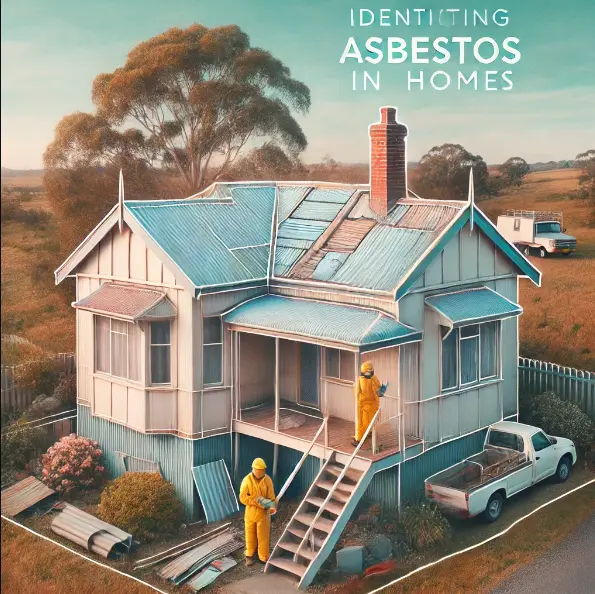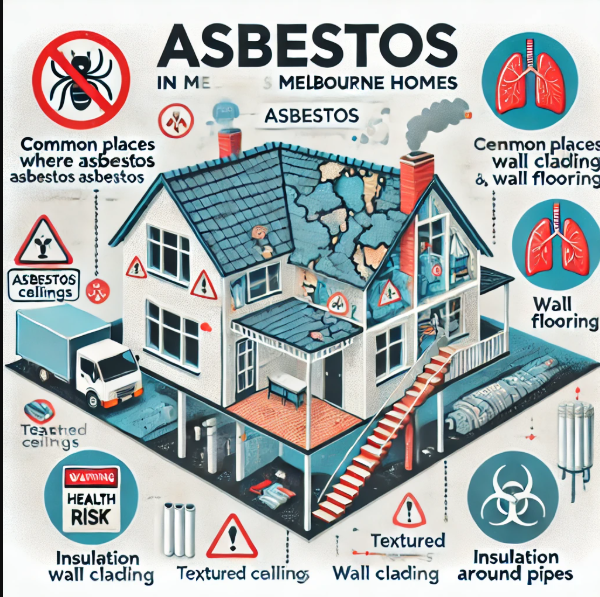Asbestos is a hazardous material that was once commonly used in construction for its fire-resistant and insulating properties. However, once the dangers of asbestos exposure became clear, its use was banned in Australia. Despite this, many homes, especially those built before the 1990s, still contain asbestos-containing materials (ACMs). During a renovation project in Melbourne, these materials can be disturbed, releasing dangerous asbestos fibres into the air and putting the health of workers and homeowners at risk.
To ensure the safe removal of asbestos, a methodical process must be followed. This article provides a detailed, step-by-step guide on how asbestos removal is carried out during a renovation in Melbourne, from initial assessment to disposal and site clearance.
1. Initial Asbestos Assessment and Testing
Before any asbestos removal can take place, an initial asbestos assessment must be conducted. This step is critical for identifying whether asbestos is present in the materials that are going to be disturbed during the renovation.
A licensed asbestos assessor will conduct a thorough inspection of the property, particularly focusing on areas where asbestos-containing materials are commonly found, such as:
- Textured ceilings (popcorn ceilings)
- Fibro sheeting in walls and ceilings
- Roofing materials
- Floor tiles and linoleum
- Pipe insulation and ductwork
The assessor will collect samples from suspected materials, which are then sent to a certified laboratory for testing. Laboratory testing is the only definitive way to confirm the presence of asbestos. If asbestos is detected, the next steps in the removal process are determined.
2. Developing an Asbestos Removal Plan
Once asbestos is confirmed in the building, an asbestos removal plan must be developed. This plan outlines the procedures to be followed during the removal, ensuring that the work is done safely and in compliance with legal regulations. The removal plan includes:
- Scope of work: Identifies which materials are to be removed and how the work will be carried out.
- Safety procedures: Details the safety measures in place to protect workers and the public from exposure to asbestos fibres.
- Containment protocols: Specifies how the work area will be contained to prevent asbestos fibres from escaping into the rest of the property.
- Waste disposal: Outlines how asbestos waste will be disposed of, ensuring it is taken to a licensed disposal facility.
This plan must be approved by relevant authorities before any removal work begins.
3. Securing the Work Area and Establishing Containment
Asbestos removal requires strict containment measures to prevent fibres from spreading throughout the property. Before starting the removal, the work area must be fully sealed off from the rest of the building to prevent contamination.
Key steps include:
- Sealing off doors and windows: The work area is isolated with plastic sheeting, and all doors and windows are sealed to prevent the spread of asbestos fibres.
- Negative air pressure: A negative air pressure system may be set up in the containment area. This ensures that air flows out of the worksite, preventing asbestos fibres from leaking into other areas of the building.
- Warning signage: Clear warning signs are posted around the work area to inform anyone nearby of the asbestos removal.
These containment protocols are designed to keep the removal process isolated and ensure that the rest of the property remains safe.
4. Use of Personal Protective Equipment (PPE)
The safety of workers is paramount during asbestos removal. All individuals involved in the process must wear the appropriate personal protective equipment (PPE) to minimise the risk of exposure to asbestos fibres. PPE for asbestos removal includes:
- Disposable coveralls: These protective suits cover the body to prevent asbestos from coming into contact with clothing or skin.
- Respirators: Workers are required to wear specialised respirators, such as PAPR (Powered Air-Purifying Respirators), or half-face respirators with P100 filters, to protect against inhaling asbestos fibres.
- Gloves: Disposable gloves are worn to prevent direct contact with asbestos-containing materials.
- Footwear: Disposable shoe covers are used to avoid tracking asbestos fibres outside the containment area.
The use of PPE ensures that workers are protected from inhaling harmful asbestos fibres or coming into direct contact with contaminated materials.
5. Wetting and Removal of Asbestos Materials
The next step in the process is to safely remove the asbestos-containing materials. To prevent asbestos fibres from becoming airborne, the materials are wet down with a fine mist of water or a wetting agent before removal. Wetting the materials helps to prevent dust and fibres from being released into the air.
The asbestos removal team carefully removes the materials from the site, taking great care to avoid breaking or disturbing the materials any more than necessary. Depending on the material, different techniques are used:
- Fibro sheeting: This type of asbestos material is carefully unfastened and removed in large sections.
- Floor tiles and linoleum: These materials are typically removed by gently lifting and scraping them off the surface.
- Insulation: Pipe and duct insulation are removed carefully to avoid releasing asbestos fibres.
Throughout the removal process, all materials are kept damp to minimise the release of fibres.
6. Disposal of Asbestos Waste
Once the asbestos materials have been removed, they must be safely packed and sealed for disposal. Asbestos waste is classified as hazardous and must be disposed of at an approved facility designed to handle asbestos-containing materials.
The waste is carefully sealed in heavy-duty plastic bags or containers, clearly labelled with warnings about the presence of asbestos. The removalist then transports the sealed waste to a licensed asbestos disposal facility. At the disposal facility, the asbestos waste is carefully processed and disposed of according to strict regulations.
Improper disposal of asbestos waste can lead to contamination and health risks, so it is essential that all asbestos waste is handled and disposed of according to the law.
7. Air Quality Testing and Site Decontamination
After the removal of asbestos materials, the worksite must undergo air quality testing to ensure that no asbestos fibres remain in the air. Air samples are taken from the containment area, and the results are sent to a laboratory for analysis. If the air quality meets the required standards, the worksite can be deemed safe.
Once air quality testing is complete, the site is thoroughly decontaminated. This includes:
- Cleaning all surfaces in the work area
- Removing all protective sheeting and equipment
- Ensuring that all PPE and waste are disposed of properly
Decontamination is an essential step to ensure that no asbestos fibres remain in the environment.
8. Final Inspection and Clearance Certificate
The final step in the asbestos removal process is a final inspection. A licensed asbestos assessor will inspect the site to ensure that all asbestos materials have been removed and that the area is safe for re-entry. If everything meets the required standards, the assessor will issue a clearance certificate.
This certificate confirms that the work has been completed in compliance with safety regulations and that the site is free from asbestos contamination.
Asbestos Removal Is a Complex and Highly Regulated Process
Asbestos removal is a complex and highly regulated process that requires specialised training and expertise. Whether you are renovating a Melbourne home or undertaking a strip-out, it is essential to hire a licensed asbestos removalist to safely and effectively manage asbestos-containing materials.
The process involves careful assessment, containment, removal, disposal, and decontamination, all of which must be conducted according to strict safety protocols. By hiring a licensed asbestos removalist, you can ensure that your renovation project is carried out safely and in compliance with legal requirements, protecting your health, the health of others, and the environment.
For more information on asbestos removal in Melbourne, read our Guide to Asbestos Testing and Safe Removal.





